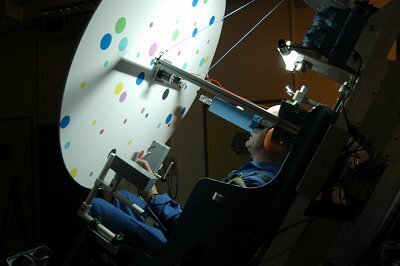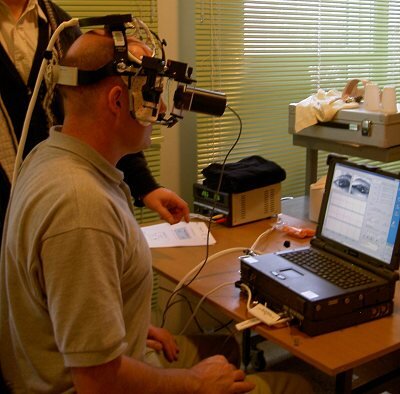Physiology experiments
CIRCA
24-Hour pattern of blood pressure and heart rate in weightlessness
The CIRCA experiment aims to measure the pattern of blood pressure and heart rate in an astronaut during a 24-hr period. The combined data from 2 different instruments used in this experiment will enable the experiment team to improve their understanding of how the cardiovascular system (system of heart and blood vessels in the body) adapts to a weightless environment. The experiment will do so by taking repeated measurements of blood pressure using devices attached to the upper arm and to the finger.
HEART
Physiological parameters that predict orthostatic intolerance after spaceflight
The objective is to predict orthostatic intolerance, i.e. the inability to stand upright, of astronauts who have spent a long period in a weightless environment. The predictions will be based on physical parameters such as blood pressure measurements, measurements from electrocardiograms, and the use of ultrasound equipment to measure brain blood flow and the expansion and contraction of the thoracic cavity (the thoracic cavity is the area enclosed by the ribs, which holds the heart and lungs).
The data obtained will serve as an astronaut’s input characteristics to a computer model of the circulation. The astronauts are tested pre-flight and post-flight in a ground-based laboratory using a computerised tilting table that can induce a variety of dynamic tilt manoeuvres. These parameters will act as predictors for the outcome of the post-flight test, where astronauts are asked to stand relaxed, leaning against a wall for a maximum of 10 minutes.
This experiment will provide further data already obtained from similar research performed on the Belgian Soyuz Mission “Odissea” with ESA astronaut Frank De Winne in 2002, and the Spanish Soyuz Mission “Cervantes” with ESA astronaut Pedro Duque in October 2003.

MOP
Motion Perception: Vestibular adaptation to G-transitions
The main scientific objective of this experiment is to gain insight into the process of how the body’s vestibular system adapts to the absence of gravity. In humans, the vestibular system together with visual information determines the body’s coordination, posture and balance and the perception of movement and orientation.
The adaptation in the vestibular system will be assessed by comparing the perception of motion against the real movement of the body. To this end, the astronaut will be asked to fill in a short questionnaire every day during the spaceflight, wherein he reports his motion sensation as a result of head movements around the three principal axes. Head movements are important in the experiment as the inner ear is the location of the sensory organs of the vestibular system.
The astronaut will also be questioned on whether he experiences any discomfort regarding space adaptation syndrome, commonly known as ‘space sickness’, caused by their daily activities. A second objective of the Motion Perception experiment is to correlate an astronaut’s susceptibility to space sickness with a susceptibility to sickness induced by centrifugation. Sickness induced by centrifugation is a condition with similarities to space sickness. A pre-flight ground experiment will be performed wherein the astronaut’s susceptibility to sickness induced by centrifugation is assessed by exposing him to hypergravity (≈3g) in a centrifuge.
MUSCLE
Study of lower back pain in astronauts during spaceflight
The main scientific objective of this experiment is to test the hypothesis that the atrophy of certain deep abdominal muscles in weightlessness, leads to lower back pain in astronauts. In the act of, for example, bending forwards at the waist, muscles would normally act to counter prolonged strain on one of the pelvic ligaments.
In weightlessness it is assumed that this counteractive process is gradually weakened due to atrophy of these muscles. To test the hypothesis, the (expected) development of lower back pain will be recorded by means of a questionnaire, which records specific information including the location of any lower back pain, it’s acuteness and it’s length of duration.
The results regarding type and intensity of pain will be related to the data on the physiological process of muscle adaptation as obtained from previous ground studies. In these studies, changes in muscle form, structure and volume were measured by means of magnetic resonance imaging of the lower back and pelvic region, and a questionnaire on lower back pain was used.

ETD - (Eye Tracking Device) Measurement by Eye Tracking Device in orientation of the Listing’s plane
The Listing’s plane is a co-ordinate framework, which is used to define the movement of the eyes in the head. On Earth it appears to be dependent on inputs from the body’s vestibular system, which controls the body’s balance, orientation and posture. The main scientific objectives of the ETD experiment are to measure:
- The orientation of Listing’s plane in a weightless environment
- Determine if the Listing’s plane is linked or not to a co-ordinate frame of reference for what is called the vestibulo-oculomotor response. This response allows the eyes to stay focussed on an object, while the head is moving, by making compensatory eye movements.
The experiment will be carried out using the Eye Tracking Device (ETD), which consists of a headset that includes two camera modules for binocular recording of horizontal, vertical and rotational eye movements. The device also includes a laptop to record and process results including continuous images of the subject’s eyes.

